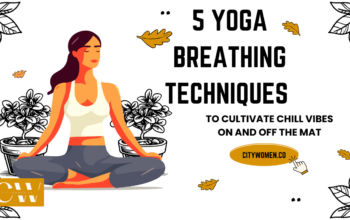
September 12, 2019 at 02:00PM by CWC
I discovered something new about myself today: I am a “reluctant pacer.”
If you’re thinking, “WTF does that mean?” you’d be forgiven as I, too, would have had no clue prior to a lengthy and fascinating deep dive into a new quiz launching today from NYC-based women’s wellness center Tia. It centers around a concept the company’s chief medical officer Stephanie McClellan, MD, has termed “stress signatures.” Based on a combination of bench research and clinical practice, Dr. McClellan has found that women tend to fall into one of four categories (or “stress signatures”) when it comes to how their brains and bodies respond to chronic stress: the vigilant sprinter, the vigilant pacer, the reluctant sprinter, and the reluctant pacer.
The 82-question quiz, which feels similar to a Myers-Briggs test, presents a range of statements like, “I retain fluid when I’m stressed” or “I like to start my day with intense exercise,” and has you choose whether that is never, rarely, sometimes, usually, or almost always true for you. At the end, you are matched with your stress signature and sent via email recommendations on what that means and lifestyle things to help with it.
The goal is to help women more effectively manage their stress, Dr. McClellan tells me. “The point of outlining the stress signatures is so that women can recognize these broad-stroke clinical guidelines and actually intervene in a way with intention, whether it’s the food they eat, or their sleep patterns, or their exercise, or how much they choose to drink or not—they can actually reverse and reduce allostatic load,” she says. Allostatic load = science speak for the cost it takes for your body to maintain homeostasis in response to stressors. The bigger allostatic load on your body, the worse potential consequences for your long-term health.
As stress research is intensely complex—hormonal fluctuations also play a role in your stress response, for example—Dr. McClellan admits the creation of these stress signatures is bold. Since it can take 20 to 25 years for research to make it into clinical practice, however, she felt it was better to work off her hypothesis—backed by her extensive research and clinical experience—than to continue to wait, especially given the ubiquity of anxiety, depression, and even suicide. “I hope in five to 10 years this quiz is revised and our recommendations continue to be revised, but we thought we had to take a stand on this,” she explains.
ADVERTISEMENT
ADVERTISEMENTKate Spade Autumn/Winter Sale |
Below, Dr. McClellan explains the science and research fueling her stress signature theory and gives insight into how yours could be responsible for everything from gut discomfort to urinary tract infections to chronic snooze-button addiction and beyond.
How stress affects the body
When you get stressed, a number of things happen in your mind and body that aren’t consciously directed. This is known as a stress pathway, “a highly conserved biologic pathway that works for survival,” Dr. McClellan says—basically, your fight or flight response. “In general, there are many pathways that get activated or deactivated in a highly orchestrated, integrated way,” Dr. McClellan explains. “In the simplest way, you can think of that stress pathway needing or wanting to do two things—one is to mobilize energy quickly and two is to put the nervous system…on high alert.”
Of course, these stress responses were initially developed to keep us safe from predators, but this is no longer their typical use. “Today our stress pathways have been activated by psychological and emotional triggers, and the reason that contributes to allostatic load is those triggers tend to occur multiple times during the day.” Various things activate our stress pathways all day (realizing you’re late for work; hearing a stalled car’s engine blast like a gun shot), but they don’t have a clear “off” switch in the same way as say, outrunning a wolf and living to tell the tale. Since threats don’t appear and disappear as clearly as they once did, the internal systems triggered by stress often don’t get enough time to rest and repair between activations—which can take a major toll on the body’s health if left unchecked.
People typically have three common stress triggers…
Broadly, Dr. McClellan’s found that our modern psychological stress triggers tend to fall in three categories:
1. Being in a new situation, even if you’re prepared. Any new situation, says Dr. McClellan, is a rapid trigger for stress pathways; however, it’s the easiest one to overcome via adaptation, practice, and reiteration. In other words, if you’re stressed on your first day at a new job, that particular, novelty-induced stress will diminish with each day you go into the office.
2. Being in a situation where the odds are stacked against you. The example Dr. McClellan uses here is that of a mother, who has every intention of taking good care of her child, but who is struggling financially to provide for them both. Her allostatic burden is high because she’s having to continually strategize around ways to facilitate survival or thriving. “This is where I think the cultural, social, economic burdens of stress play out,” she says. Dr. McClellan also thinks that this is where what she calls “the burden of social media” enters into the chronic stress picture, because you’re constantly comparing yourself to others and feeling as though you are not keeping up, not thriving, in contrast to those you see online.
3. Being in a situation which may separate you from “your clan.” “If you look at humans from an anthropologic point of view, clan integrity was essential to survival,” she says. “Very few people could have been left behind and live very long.” So, she explains, the threat of be ostracized is a potent one. You may fear being tossed from your friend group, from your financial strata, from an age demographic, etc. “I have dealt with this clinically in many different iterations—fear of losing social status, fear of losing beauty, fear of losing health.”
…and we respond to those triggers in one of four ways, depending on our unique stress type
Everybody reacts differently when their stress pathway is activated; however, as mentioned, Dr. McClellan’s found there to be four broad signatures—vigilant sprinter, vigilant pacer, reluctant sprinter, and reluctant pacer.
The sprinter/pacer part of the signature (think of it as the X axis in a graph) refers to how quickly and how easily you mobilize energy as a result of your cortisol signaling. In general, sprinters mobilize energy quickly, and these people tend to ‘go, go, go.’ Pacers, on the other hand, tend to have a weak cortisol response, so they have trouble mobilizing energy. In contrast to the sprinter group, this subset of individuals may have trouble getting out of bed in the morning.
Meanwhile, the vigilant/reluctant part of the signature (the Y axis on a graph) deals with what happens neurologically when your stress pathway is activated. Vigilants, she says, tend to be more outwardly focused and actively engaged in the world whereas the reluctants tend to be more internal.
ADVERTISEMENT
ADVERTISEMENTSports Direct Free Delivery on All Orders! |
A stress signature is created by assigning one label from each of the two categories, to account for both the way in which your body mobilizes energy and the manner in which its nervous system is aroused. Four unique combinations result:
TYPE 1: VIGILANT SPRINTER
Vigilant sprinters experience a classic rise in cortisol when their stress pathway is activated. The issue, however, is that their stress response is activated too frequently, which means they don’t have adequate periods of recovery, and cellular repair is sublimated in service of the stress response. This also may result in cardiovascular stress, because the heart is told to beat both faster and stronger without adequate rest.
In Dr. McClellan’s experience, vigilant sprinters can be more prone to cold sores and common colds. “It’s almost like the body is saying, ‘We’ll permit the minor annoyance infection because we’re upholding the soldiers the immune system in reserve for the big attack that might be coming,’” she explains. They also may naturally hold more belly fat because of the constant cortisol action.
To counteract these negative potential effects, balance is critical for this group. Meditation can be good for vigilant sprinters, and Dr. McClellan also recommends that they either shun coffee altogether or at least wait to have a cup until after 10 a.m., since they’re naturally getting such a strong cortisol spike in the morning. “The other thing that’s important for this group, because they literally hit the ground running, is nutrient delivery in the morning because their brain is on and it’s looking for energy quickly,” she says. So no skipping breakfast for this group.
TYPE 2: VIGILANT PACER
Dr. McClellan is herself a vigilant pacer, and as such she says energy mobilization—mustering up the energy to do ordinary things—is difficult for her. She also tells me she gets jet-lagged really easily, and is “truly the world’s worst drinker,” which are, she believes, common issues for this stress type. They also tend to have outsized reactions to stress. “The pacers seem kind of mellow but when they have a big response they have a big response, and it’s hard for them to turn it off because their cortisol signaling is weaker,” she says. They may be more prone to gastrointestinal issues, autoimmune disorders, seasonal affective disorder, and postpartum depression.
This type generally needs to put in extra effort to support their circadian rhythm, Dr. McClellan says. “Sleep is important across the board for everyone, but in this type we make specific recommendations regarding trying to go to bed at the same time and waking up at the same time because you’re intrinsically vulnerable to circadian rhythm disruption,” she says.
TYPE 3: RELUCTANT SPRINTER
The stress pathway in reluctant sprinters is unique in that it’s activated easily and can be maintained for a long period of time, until they crash. “What happens to this group is they’re go, go, go… and then they metaphorically fall off the energy cliff,” Dr. McClellan explains. “These are women who say, ‘Wow, I really can do so much, but when I crash I need to become a hermit, wrap up in my blanket and don’t go out for two days and watch reruns of romantic comedies.’” This crash, she says, is your body’s way of removing itself from the situation to restore itself and find energy for future threats.
McClellan suggests this group become more aware of their body’s signaling so they don’t get to the cliff, but when they do get there, the focus should be on proper eating in small amounts to restore micronutrients and refuel your neurotransmitters. You also want to allow pause for your cardiovascular system so when you’re in this “collapse mode,” exercise should be gentle—think yoga over HIIT during this low-energy time.
TYPE 4: RELUCTANT PACER
ADVERTISEMENT

ADVERTISEMENT
Anya Hindmarch - I AM A PLASTIC BAGReluctant pacers are the most rare of the four stress types, Dr. McClellan says. (Guess that makes me pretty special?) As reluctants, they may have experienced early life stress or trauma, and are slow to mobilize energy due to a handicapped cortisol response. As pacers, they tend to turn inward when their stress pathways are activated. The best way she has to explain this is to cite the research of psychologist Dirk Hellhammer, who talked specifically about people who fell into these two categories. “He described them as looking at their own life through milk glass lenses, almost like they’re observing their life in the third person, and I have had a handful of patients like this.”
Dr. McClellan’s recommendation for this group is to find ways to engage in the world around them, e.g. group yoga, to better manage their stress. She also says that because music is known to stimulate pathways of creativity and engagement in the world, it’s useful for modulating this group’s stress response, too. “I think diet is extremely important in this group because they [can be] very sensitive to inflammatory bowel disorders,” she adds. “So looking to a more active strategy to support their microbiome is very important here.”
Wanna know your type and get specific lifestyle recommendations to better manage your stress response? The quiz is now live.
Looking for other ways to manage your stress? Try eating these naturally stress-reducing foods. And here’s the difference between stress and anxiety.
Author Erin Bunch | Well and Good
Selected by CWC
ADVERTISEMENT
ADVERTISEMENTUp to 30% off Gift Sets |







